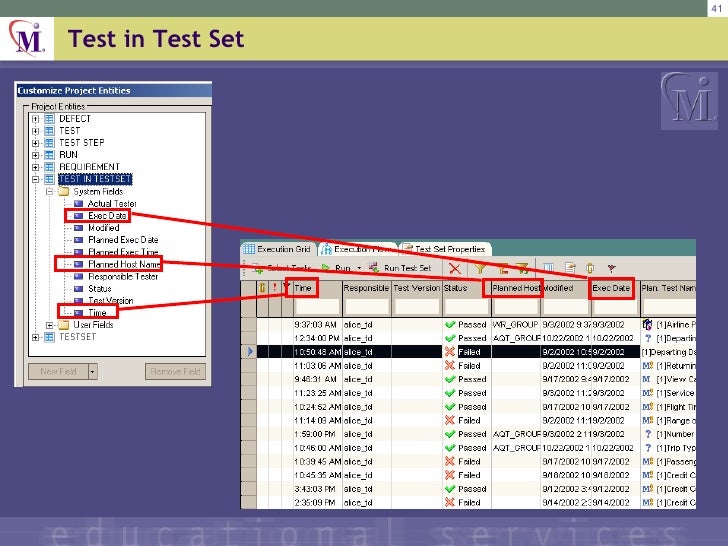Mercury Test Director
Uncharted drake's fortune full game. ● Video Card: Nvidia GeForce 8800GT 512 MB or ATI Radeon HD 3870 512 MB. Uncharted: Drake's Fortune System PC Requirements/Specifications ● OS: Windows 7 and higher ● DirectX: 11 ● CPU: Intel Core2 Duo E8200 2.66 GHz or AMD Phenom X3 8750 2.4 GHz.


Mercury Test Director Wiki

Mercury Testing Tool
I am wondering on the effects of Test Management DB applications such as Mercury Test Director (QC), Rational & Doors, on the way we plan our tests. When writing in an MS-Word document format, I would break test planning into several levels, each level of details will undergo an internal & external review (to the QA team), thus giving feedback to the system engineers & developers as early as possible, allowing to find possible bugs before they are coded, and allining people uderstandings on specific requirements. As far as I have experienced, working with DB Tools is drawing the tester to dive into details much too early, before higher levels have been reviewed, thus we miss some of the benefits of the feedback given by test design, as well as loose the ability to design the tests Top-Down. To elaborate on my writing methods while not using a DB: 1st stage: I would query the high level scope of the feature, by searching for dimentions which might have a affect on it - may it be relevant sorrounding (like BW, or allowed packet size), or testing topics (Functional, Performance, Usability). By placing those in a multi-dimentional table/s, I am getting a high level scope of the test document, in just few pages, allowing easy review & prioritizing focus (vs. Reviewing the few hundreds of test case pages which will be derived from that).